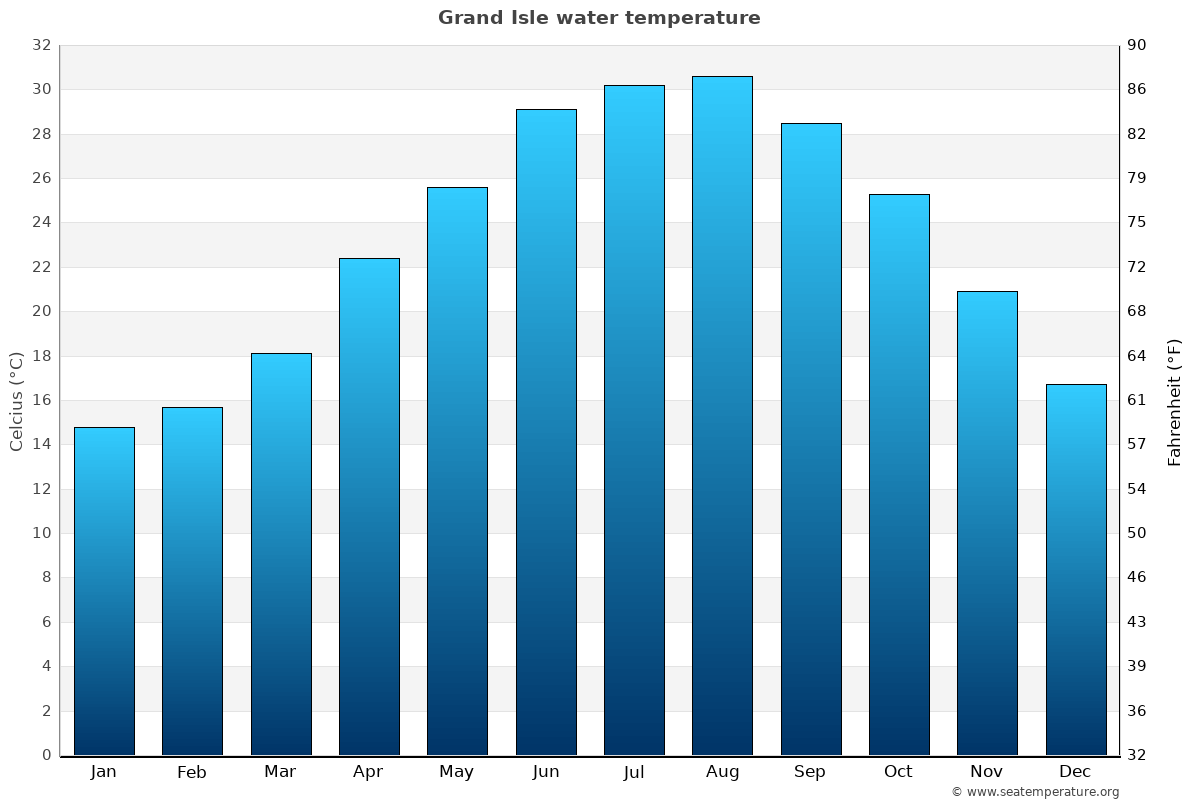

The day lasts on average 10 hours and 10 minutes. Precipitation amounts to 70 mm (2.8 in), distributed over 12 days. On the warmest days of the month, the temperature usually reaches around 12.5 ☌ (54.5 ☏). On the coldest nights of the month, the temperature usually drops to around -1 ☌ (30 ☏). The average temperature is of 6.5 ☌ (44 ☏), with a minimum of 4.3 ☌ (39.7 ☏) and a maximum of 8.8 ☌ (47.8 ☏).

In February, the coldest month of the year, the weather in Jersey is usually quite cold. Therefore, the sea is very cold for swimming. The average sea temperature is of 10 ☌ (50 ☏). The average wind speed is 25 kph (15 mph). There are on average 2 hours of sunshine per day. The day lasts on average 8 hours and 40 minutes. Precipitation amounts to 95 mm (3.7 in), distributed over 15 days. On the warmest days of the month, the temperature usually reaches around 12 ☌ (54 ☏). The average temperature is of 6.7 ☌ (44 ☏), with a minimum of 4.7 ☌ (40.4 ☏) and a maximum of 8.6 ☌ (47.6 ☏). In January, the weather in Jersey is usually quite mild.

( January - February - March - April - May - June - July - August - September - October - November - December) Here are the average sunshine hours per day. In one year, there are 1,900 hours of sunshine: we are at the levels of the English south coast, which is the highest in Great Britain. The sun in Jersey does not shine often from October to March (although it can come out between one disturbance and another), while from April to September, it shines for an acceptable number of hours. In November, the wind is often moderate or strong. The previous record was 36 ☌ (96.8 ☏), set in July 2019.Īutumn, from September to November, is gray, cloudy and rainy, and with each passing week, it gets progressively colder. The highest record is 37.8 ☌ (100 ☏) and was set in July 2022. However, it can sometimes exceed 30 ☌ (86 ☏). Hot days are rare: the temperature may not reach 25 ☌ (77 ☏) for an entire month. Summer, from June to August, is cool, with quite frequent rains, but also with a bit of good weather. In May, it is often still quite cold, especially in the first half of the month. In spring, from March to May, the temperature slowly rises, and Atlantic fronts become a bit less frequent. The temperature rarely drops below -5 ☌ (23 ☏), however, the coldest record is -10.9 ☌ (12.4 ☏) and was set in January 1963. Usually, cold spells are not intense and do not last long. Snowfalls are relatively rare and not abundant. Sometimes, intense Atlantic depressions can cause wind storms. The sky is often cloudy, and rainfall is frequent. Winter, from December to February, is quite cold: temperatures are not so low, but wind and humidity can increase the sensation of cold.


 0 kommentar(er)
0 kommentar(er)
